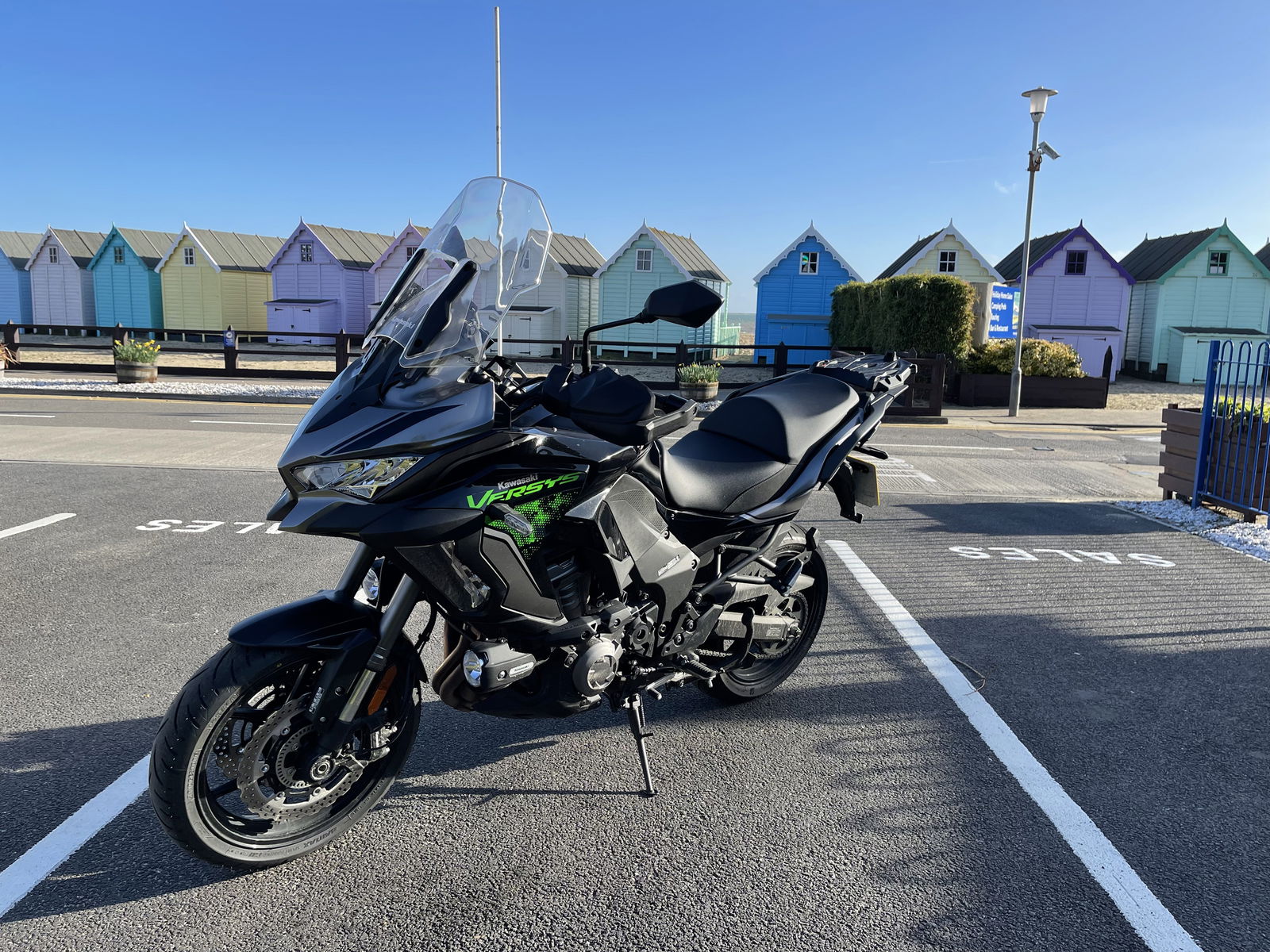Commuter special: Piaggio MP3 300 Sport and Piaggio 1 electric scooter review
A day in London sampling two commuter scooter staples; the Piaggio MP3 300 Sport and the new Piaggio 1 electric scooter.

It’s not typically the glitz and glam that you’re after for a commuter scooter. Practicality, ease of use and a touch of economy - wrap it into a bundle and you’ve got a commuter’s dream, and a market that Piaggio knows well.
Particularly close to the commuter’s heart, especially in London, is the Piaggio MP3. A three-wheeled scooter which (thanks to some loopholes that we’ll get into) can be ridden entirely on a car licence.
On the ‘new age’ side of the commuting spectrum you’ll find the freshly introduced Piaggio 1, an all-electric scooter aimed at the younger crowd and primed to tempt commuters away from tubes and onto two tubes - at least two tubes in the form of wheels that move by electric propulsion.
We headed down to Central Bikes in Shepherds Bush to have a little scoot around a wet and rainy London - proper commuter territory, so this is a proper test.
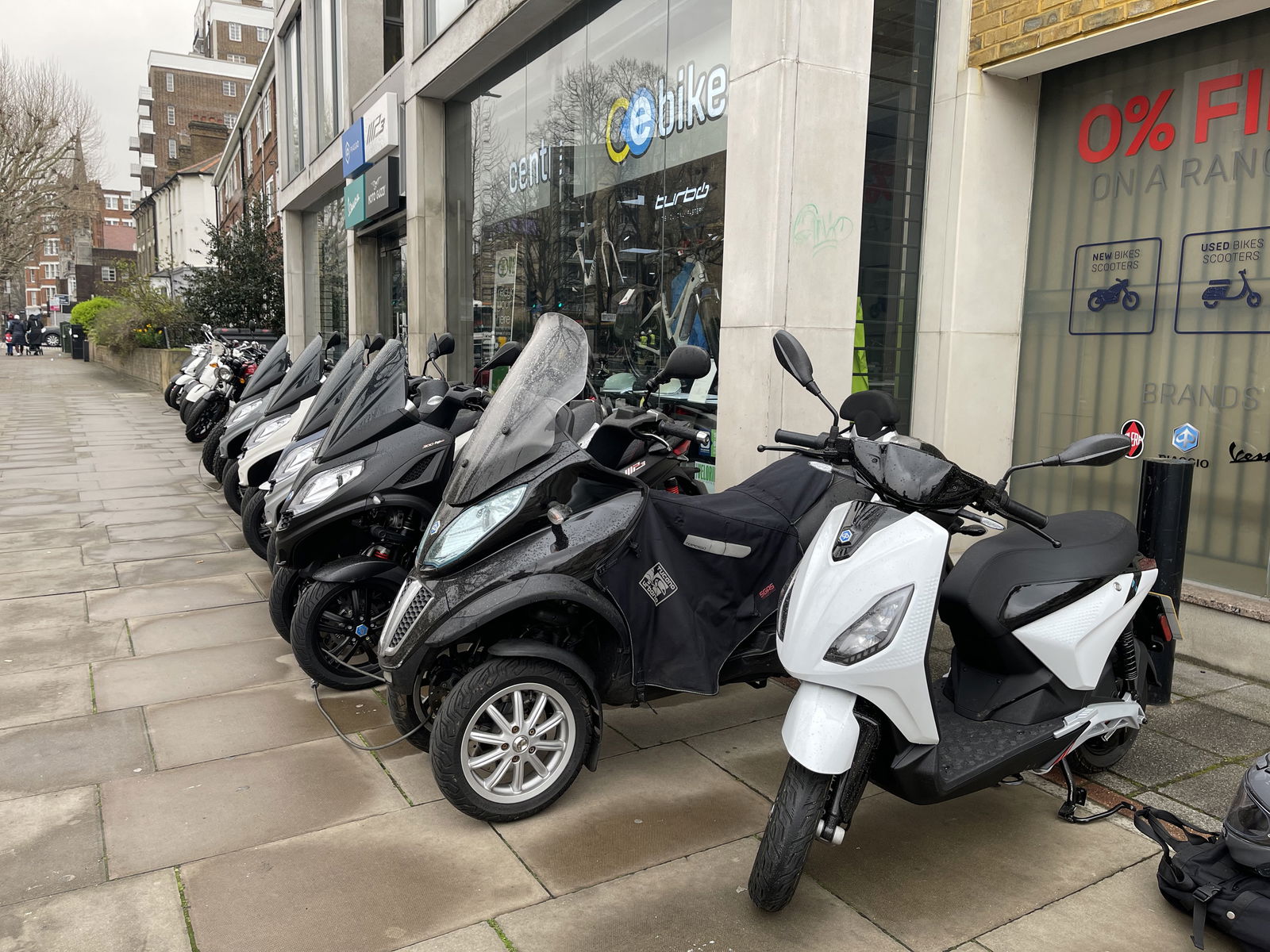
Introducing our commuter scooters: Piaggio 1 & MP3 300 Sport
We’ll start by looking at the Piaggio 1. Revealed last year and now rolling out of dealerships in the UK & Europe, the press release primarily targeted youngsters, with fresh-faced kids holding guitars and skateboards, chatting by text and looking for a fun way to get around town. Ah, stereotypes.
Speaking to the guys at Central Bikes, the actual demographic buying these in London has turned out to be middle-aged & up commuters. It may be different in central Europe, where scooters are a tad more ingrained into the typical day-to-day lifestyle.
With three different models available (1, 1+, 1 Active), the 50cc equivalent scooter can be picked up for around £2,350 - £2,500 depending on your preference - namely if you want a tad more range from the tiddly little 2 kW motor.
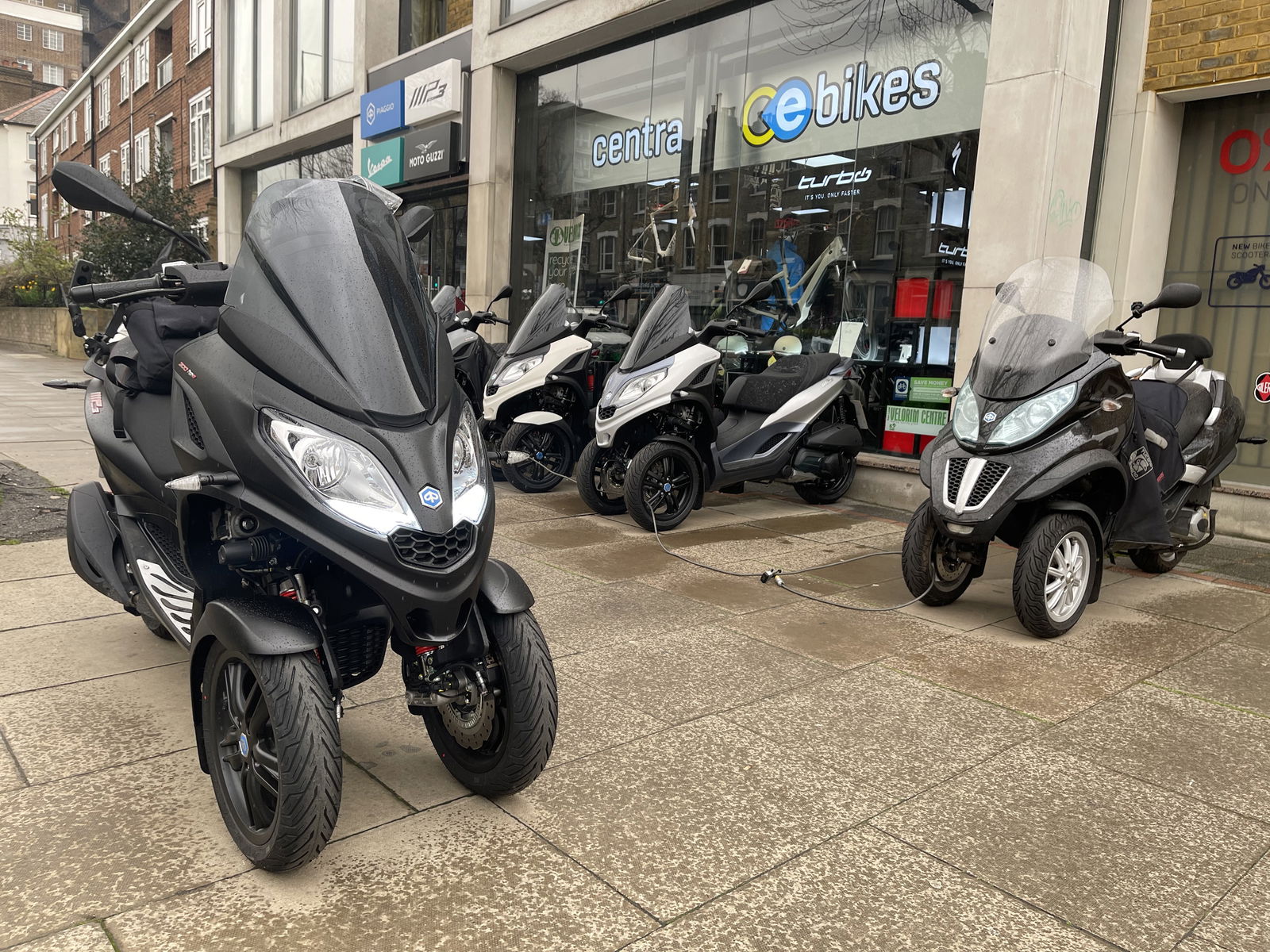
Moving to the MP3 300 Sport, this has been a staple of London (and European) commuting for years. An immensely popular three-wheeled scoot that seems to be seriously sought after and capable of holding its value over the years, the main selling point for many is being able to (fully legally) ride one of these with only a car licence.
Prices for a brand-new MP3 300 Sport start at £7,250 - and despite my assumptions that only bankers in Canary Wharf will pick these up, apparently they are far more popular across all demographics due to their unique approach to the commute.
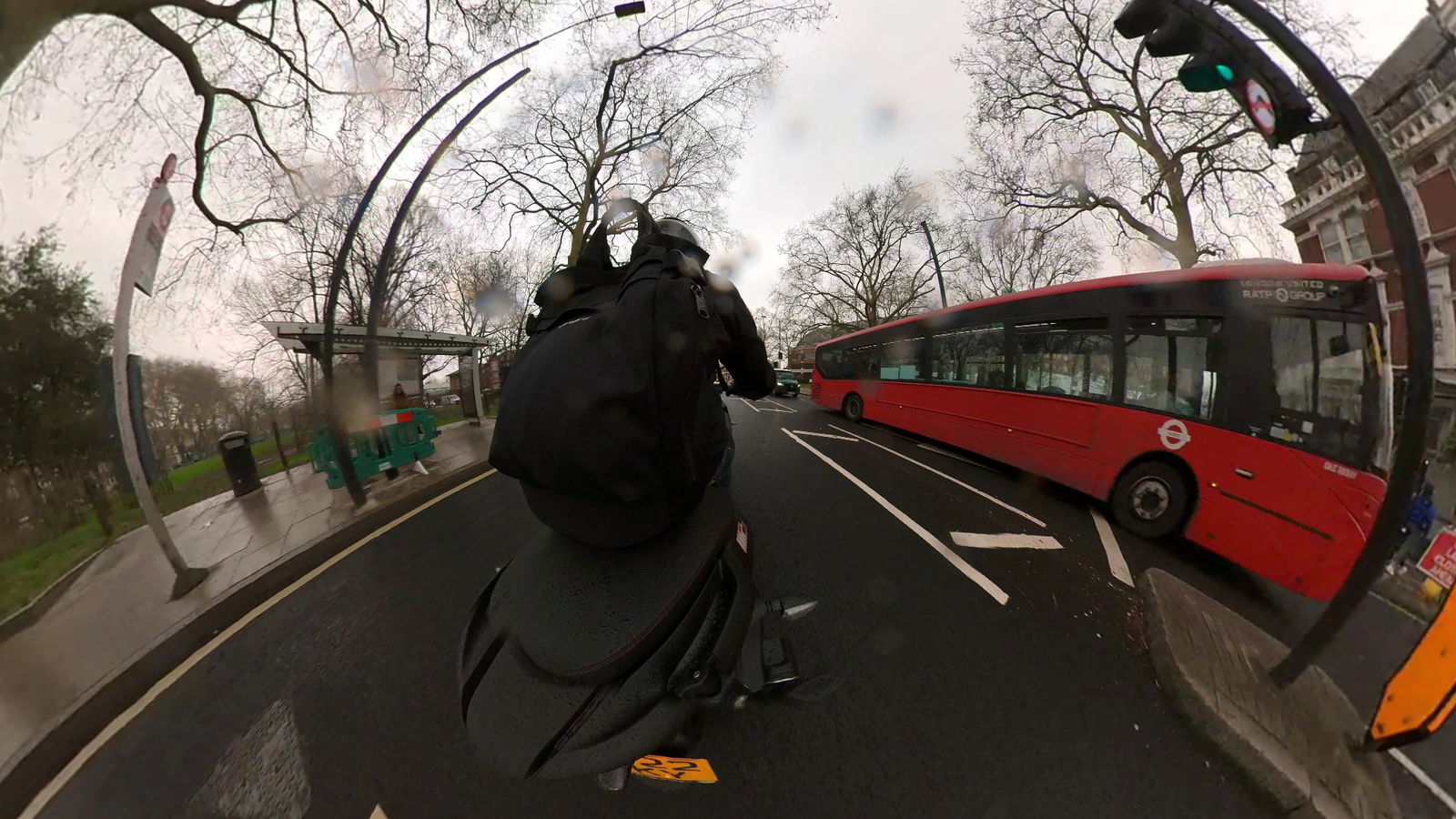
Prices
Two contrasting prices, then. Where the Piaggio 1 is the ‘future of commuting’ being powered by 100% electric, the MP3 seems to hold a dear place in their owner's hearts as being effectively a self-stabilising car that you can zip past queuing traffic on.
I was impressed by the pricing of the Piaggio 1. Having seen the quite frankly extortionate pricing for the sister-company Vespa Elettrica (a 50cc equivalent for circa £6,300) I was expecting Piaggio to follow suit. I’m glad to be wrong here.
A fresh-faced Piaggio 1 is up against a blossoming sector of electric scooters, namely from top-selling Super Soco, so getting the price nailed in was vital. Especially if they dream of selling these to younger riders - so fair play for the cheap purchase price, and a monthly cost that’ll be cheaper than a daily tube ticket.
The package proposed by the MP3 is a bit different, £7,250 is up there, but there are no other scooters that come to mind which unleash car drivers on twist-n-go machines. No, I’m not counting the stand-up scooters, that’s a whole other ball game.
Piaggio 1 certainly wins out on the price front, both upfront and ongoing costs will be nice and cheap.
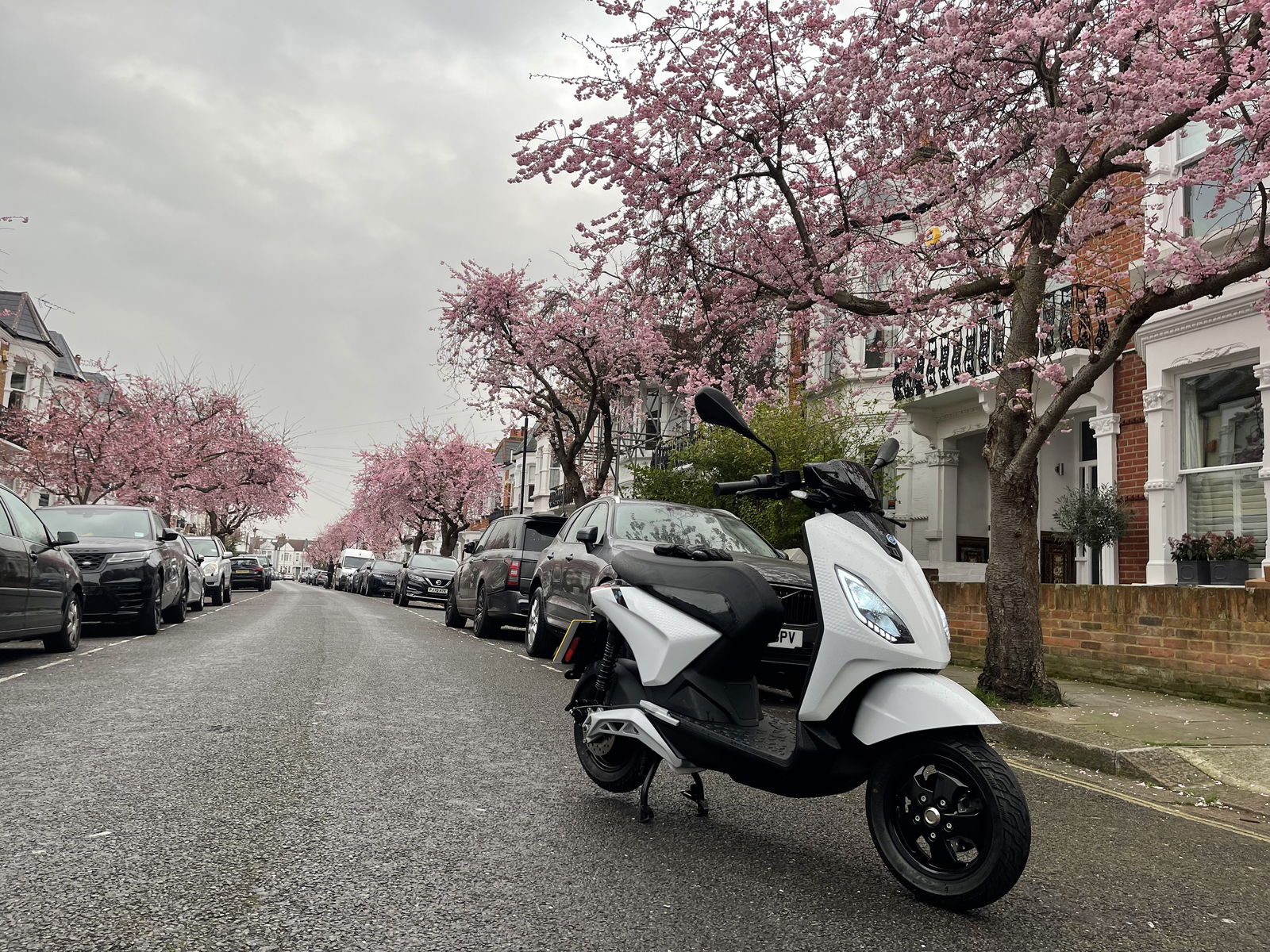
Commute one - first up, Piaggio 1
If you keep up with us on social media (if not, you should), you’ll have seen us venture down to Stamford Bridge, home of the #1 team in London, on the Piaggio 1.
It’s a short ride, around 3 miles there, but it was great fun silently zipping past queuing traffic with ease - in contrast to the Kawasaki Versys 1000 that I rode into London on.
An optimistic 37 mph (60 kph) is the given top speed, and with a large test rider on the 770 mm saddle (I’m 6’3”ish and 14 stone-ish) it was sloow off the line. The 2.0 kW (3.0 kW peak) motor needed a few trademark Fred Flintstone 'assistance pushes' to really get going, which was amusing to me and no doubt the drivers behind me as well.
It’s a tiddly little thing. 94 kg ‘wet’ (or with batteries, they may need a new term) and with 10” wheels front and rear. A full-lock turn was not possible without hanging my leg off the bike, otherwise, my knees would stop the majority of steering lock - though it’ll turn 180 in about half a car space. Outrageous.

But it was fun, easy to ride, and perfectly adequate on the 20 mph central London streets. Which reminds me, the scoot has an ‘eco mode’ limiting you to 20 mph, an ambitiously named ‘Sport’ mode (described as ‘thrilling’ in the marketing blurb), and a reverse gear.
Range figures: ‘1 Active’ in Eco mode is quoted at around 50 miles, Sport mode range is around 40 miles - the ‘1’ is 34 miles in Eco, 27 miles in Sport. Fine numbers for an inner-city commuter. The battery is said to be good for around 800 cycles, at which point it'll drop to 70% capacity - at which point you'll probably be wanting to trade it back in for a newer model with better, advanced tech.
That 2.3 kWh battery in the 1 Active (in the ‘1’ it’s a smaller 1.4 kWh) is a lightweight 15 kg (or 10 kg in the ‘1’) and housed under the seat, meaning it’s easy to unplug and take up into your office or flat to charge in around 6 hours. Careful when you plug it back in though, it conked out and died on me in traffic riding back to the dealership - I think there was a loose connection.
In terms of storage, you can fit either a full-face helmet and gloves, or the battery charger under the seat. You have keyless ignition and a snazzy LCD style colour screen displaying your info. Oh, and there’s only a centre stand.
All in, it would serve as a perfectly fine scoot to get you into a nearby office, quicker than a bus or tube if you are happy to filter past traffic, and for a reasonable price - monthly cost would be around £50. It’s small and the range numbers may mean a recharge every night for some riders, but at the end of the day, it’s a short-distance city commuter. If you’re doing 30 miles in the city you will need to consider an alternative.
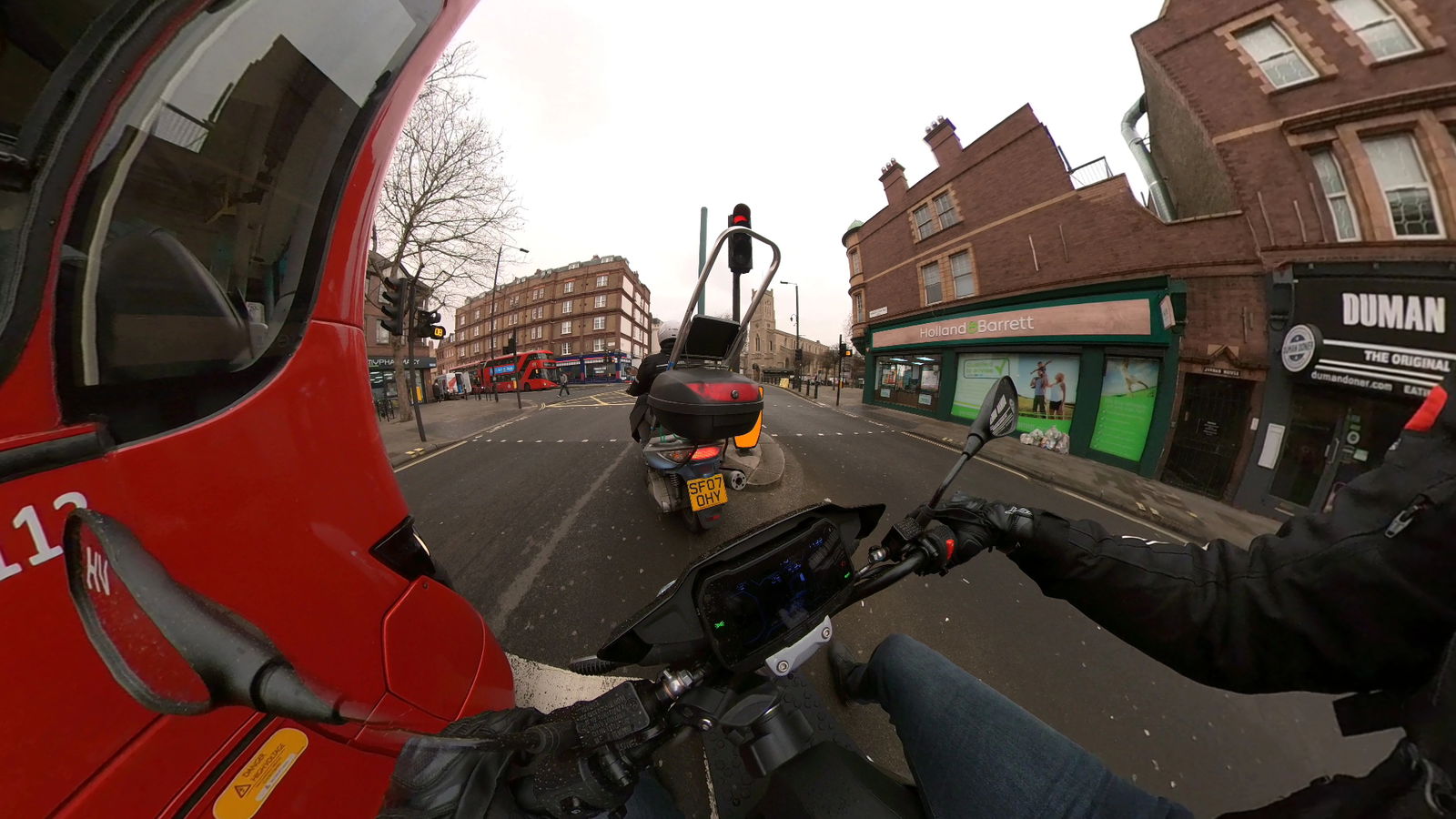
Or, if you're carrying a ladder on your scooter like the fella in that picture above, think outside of the box!
Commute two - Piaggio MP3 300 Sport
As the rain fell, I returned to the dealership to have a go on the MP3 300 Sport. More wheels, more traction! More fun?
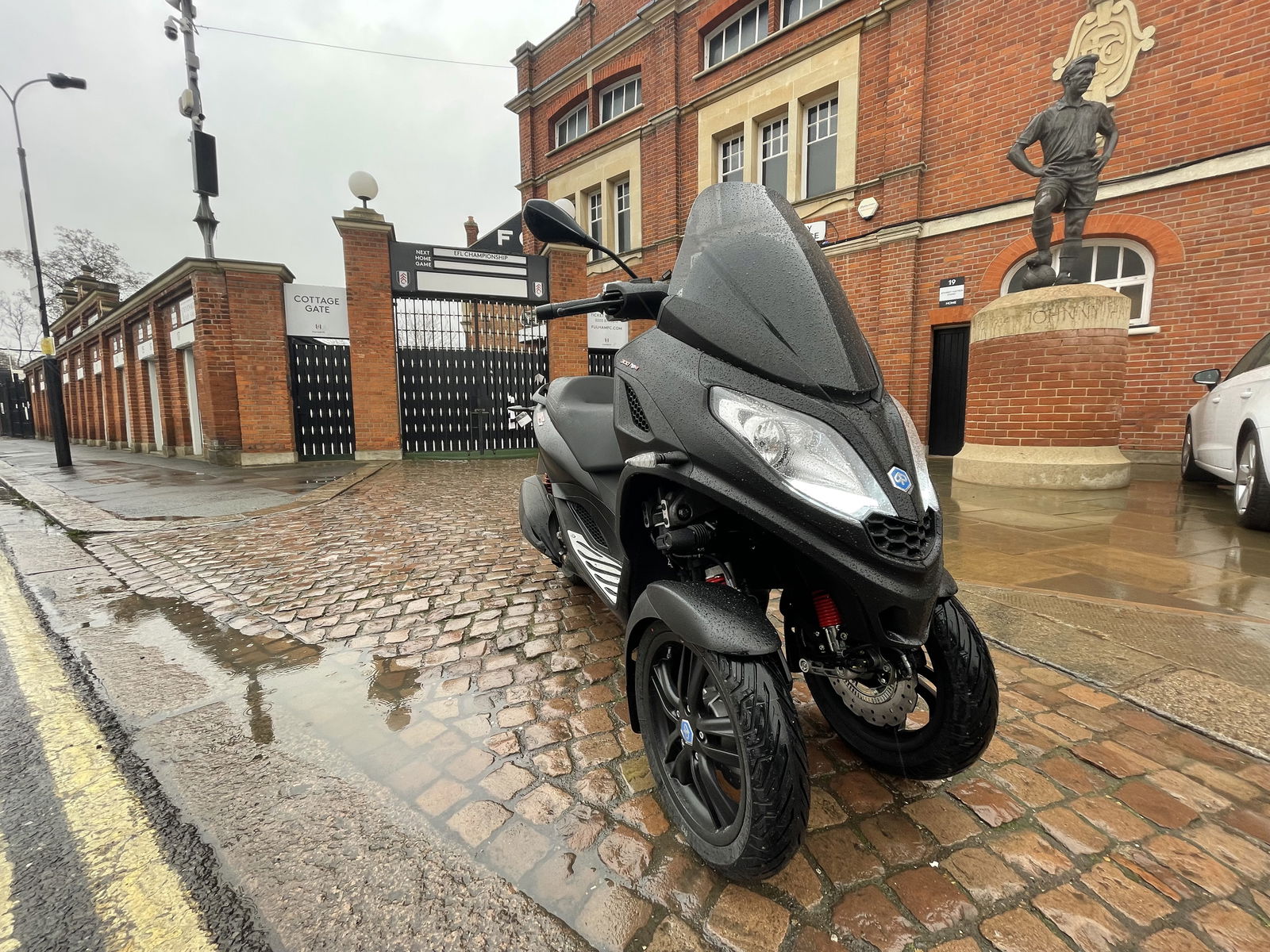
So to explain the loophole that allows car drivers to jump on one of these trikes with no helmet on the UK streets; you get a footbrake that activates both front and rear discs, the width between the two front wheels is a certain MM, and I’m told the indicator stalks are required. Perhaps it’s also the fact you can’t topple it over when it’s stopped. That’s it. I’d highly recommend at the very least a CBT before getting one, to get a bit of instruction first.
Moving on, you’ve got a handbrake to lock it in place, and a switch to lock the scooter upright when stopped - put these together and you can roll up to a light, lock yourself upright, and ride away (which disengages the lock) without your feet ever touching the ground. A unique little quirk at the very least.
At your disposal here is 26.2 BHP and 26.1 Nm of torque from the 278cc single ‘High-Performance Engine’, good enough to travel into London from the outskirts - and an 11-litre tank that’ll get you over 200 miles of range (apparently).
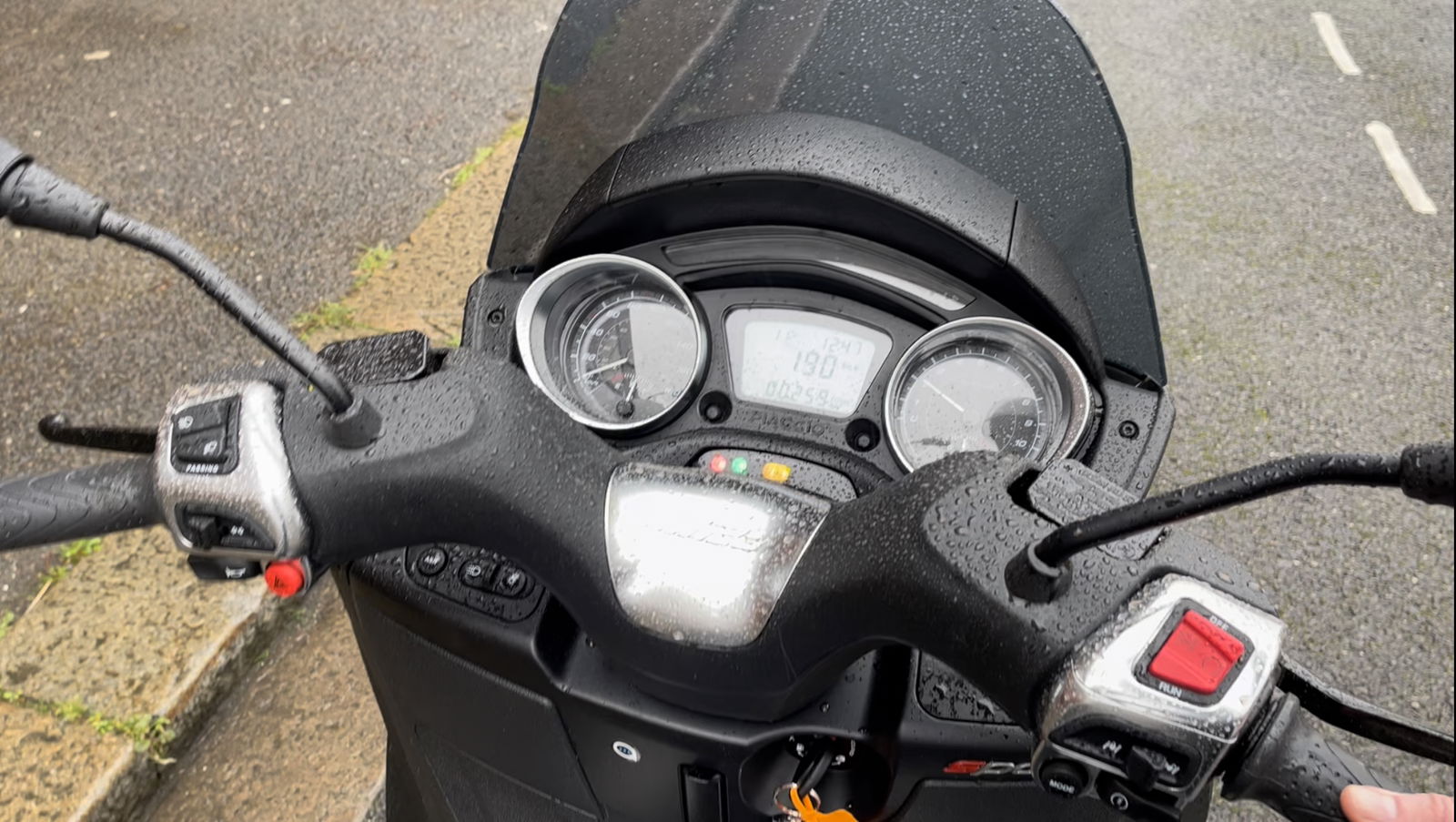
Instantly you see the appeal of these on the roads, namely being a perfect mix of car and scooter, loads of under seat storage space for your stuff, and the ability to comfortably scoot around stationary traffic and beat most of rush hour. It’s super comfortable in the 780mm seat, too, and weighs 225 kg wet.
I did find the dash a bit of a mess, here. MPH is the tiny numbers on the inside of the left dial and shrunken by the KPH numbers - with a rain-speckled dash it was hard to see your speed at a glance. The centre screen is reserved for your odometer - why don’t they just stick your speed there, digitally?
Playing ‘spot the MP3’ on my way around London I found my way over to Craven Cottage, the Fulham FC stadium, in what was apparently turning into a ‘London football stadium’ tour. Give me a little flag and I’d have tourists running after me taking pictures of all the sights.
On the topic of pictures, these look a bit like jet skis on wheels, and it was tipping it down in London at this point so felt quite apt -to be riding around with the bonus wheel up front.

Returning to Central Bikes, I was starting to go out of my way trying to skid about on the wet roads - ASR and ABS were there to 'ruin' the party, so car drivers can stamp on the footbrake to activate both front and rear brakes and come to a halt without being sent flying. Though I strongly do not recommend this, the footbrake is only really useful when you're stopped already.
Simply put, as a commuting tool, the MP3 creates a perfect mix of car and twist-and-go scooter for riding into and around the city. You can park them easily - locking it upright and pushing it back into a space - and they are not currently required to pay any congestion charge.
It was an impressive insight to the solutions for inner-city commuting life, though not something I want to do again in a hurry.
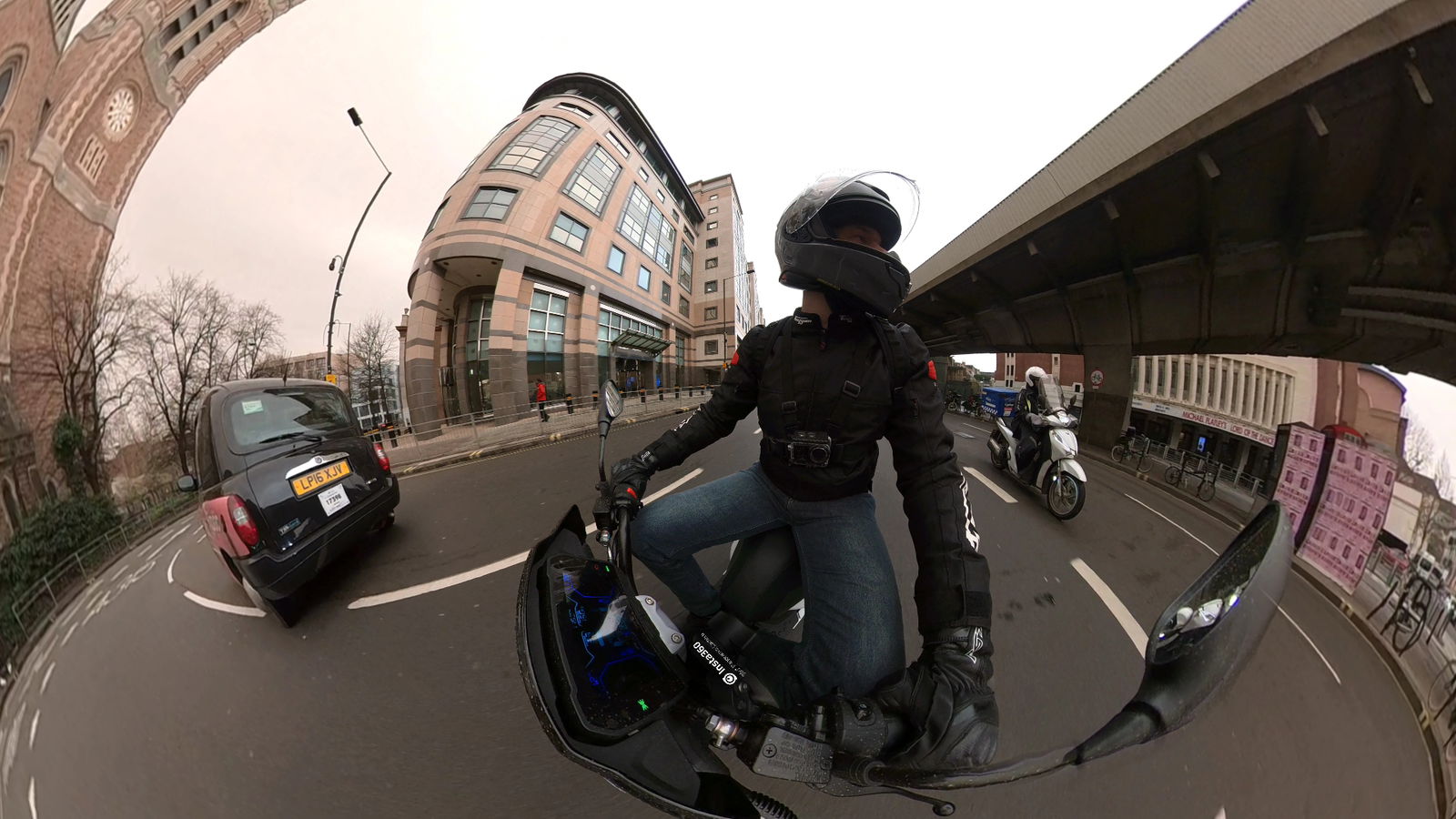
Conclusions
I suppose the instant question is ‘which did you prefer?’
It’s a tough one, but probably the MP3 on this occasion. The Piaggio 1 was too small for me, and though I could appreciate its use as a cheap inner-city clean-commuter, I just wouldn’t be able to put up with the small dimensions long term. Shorter riders like Toad would get on fine, though - particularly for short hops.
Don't discount the fact that electric transportation has some immense benefits in cities, and I'd certainly say electric scooters are the way forward for city commuters.
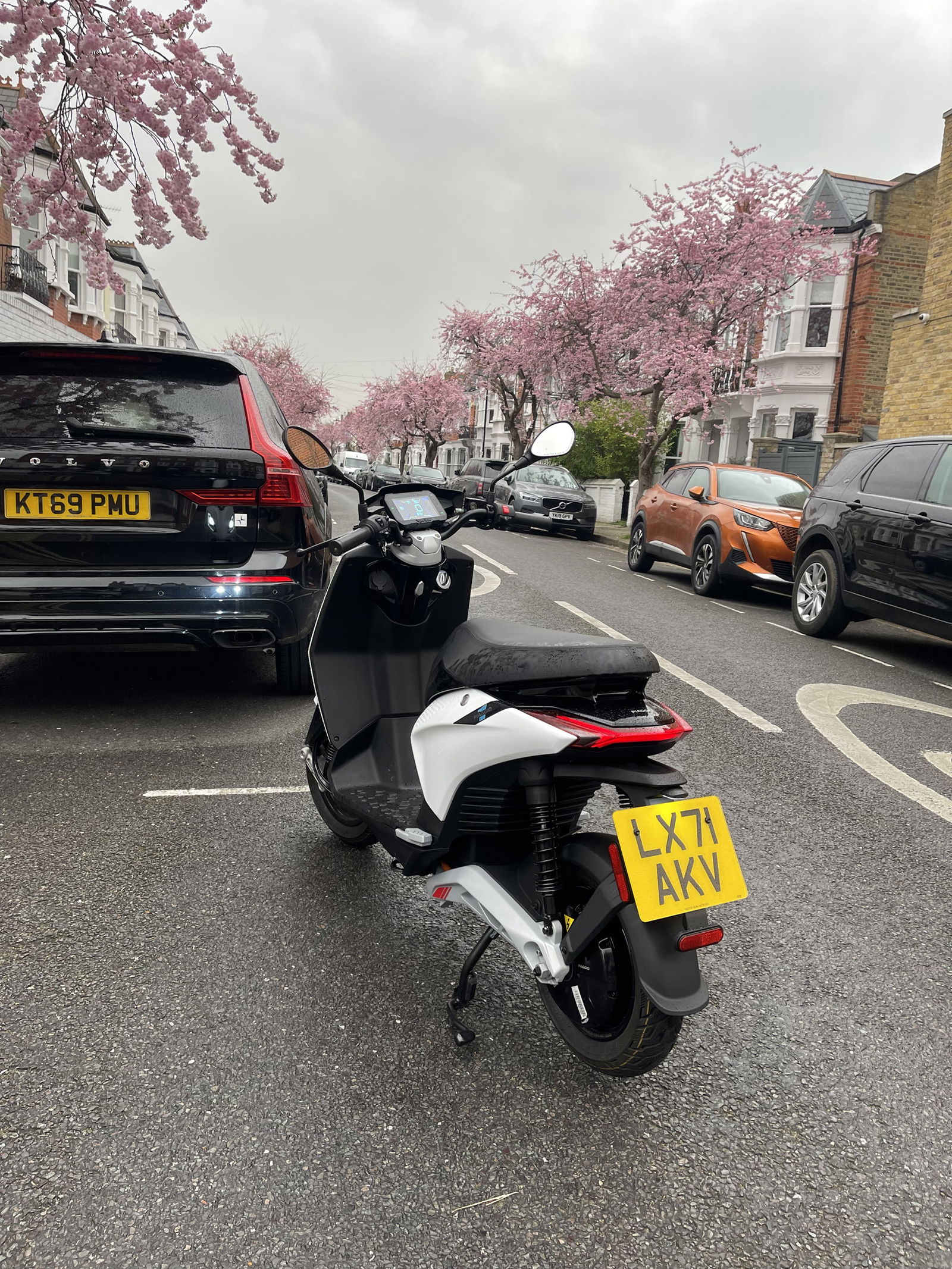
The MP3 isn’t a runaway winner, mind. It does the job, it’s loved by many owners & Europeans - and for good reason - but with my motorcycle licence in hand I’d go for a scooter that can do a bit more fun stuff, like the Honda ADV 350 for £5,599 that I recently had a go on.
Saying that the MP3 serves a particular demographic of car-licensed commuters who may live in London (or on the outskirts) and fancy a few scooter traits. You can see the appeal, even after a quick ride in London.
Now, I’m waiting for Piaggio to release the inevitable Piaggio MP3-E, an electric-powered version of the three-wheeled commuter. Surely that’s coming?
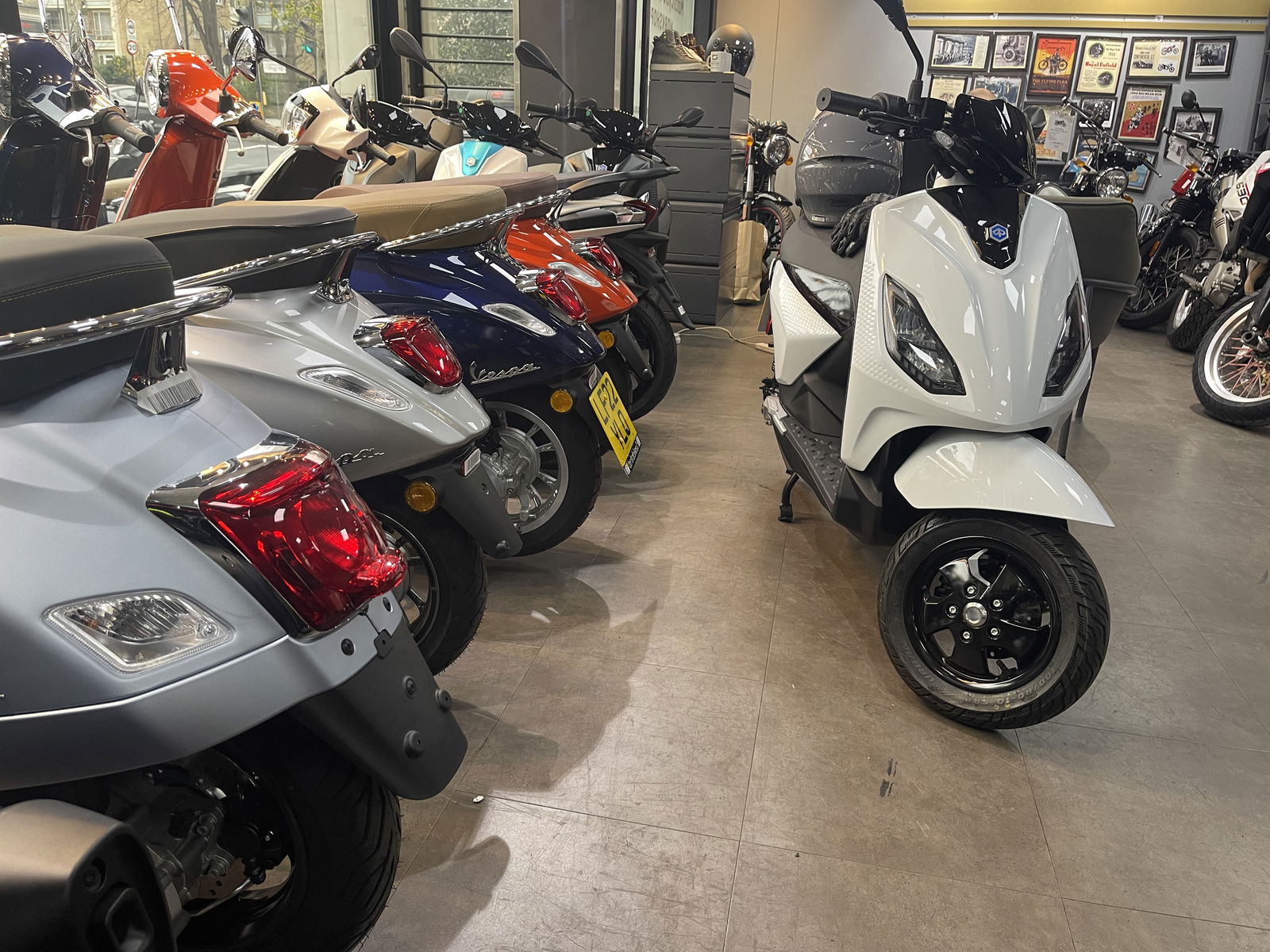
Thanks again to Piaggio & Central Bikes for lending me the two scooters for a rainy commuting day!
.jpg?width=1600)
